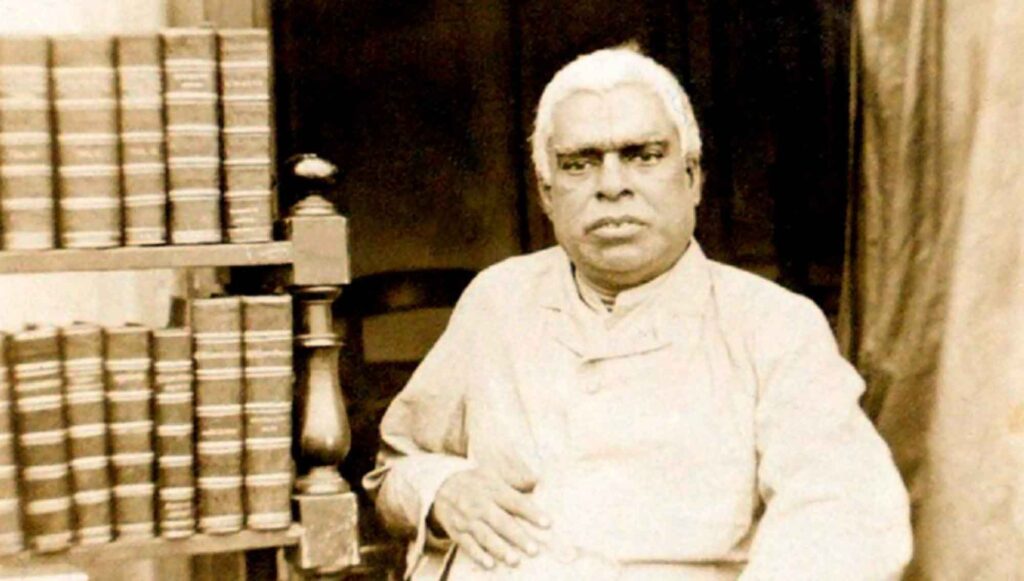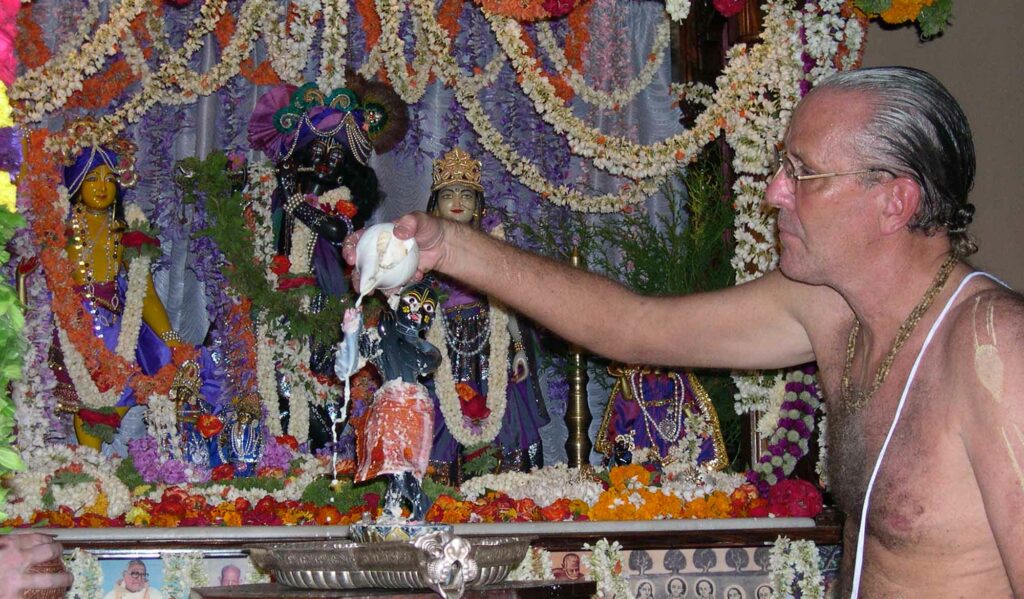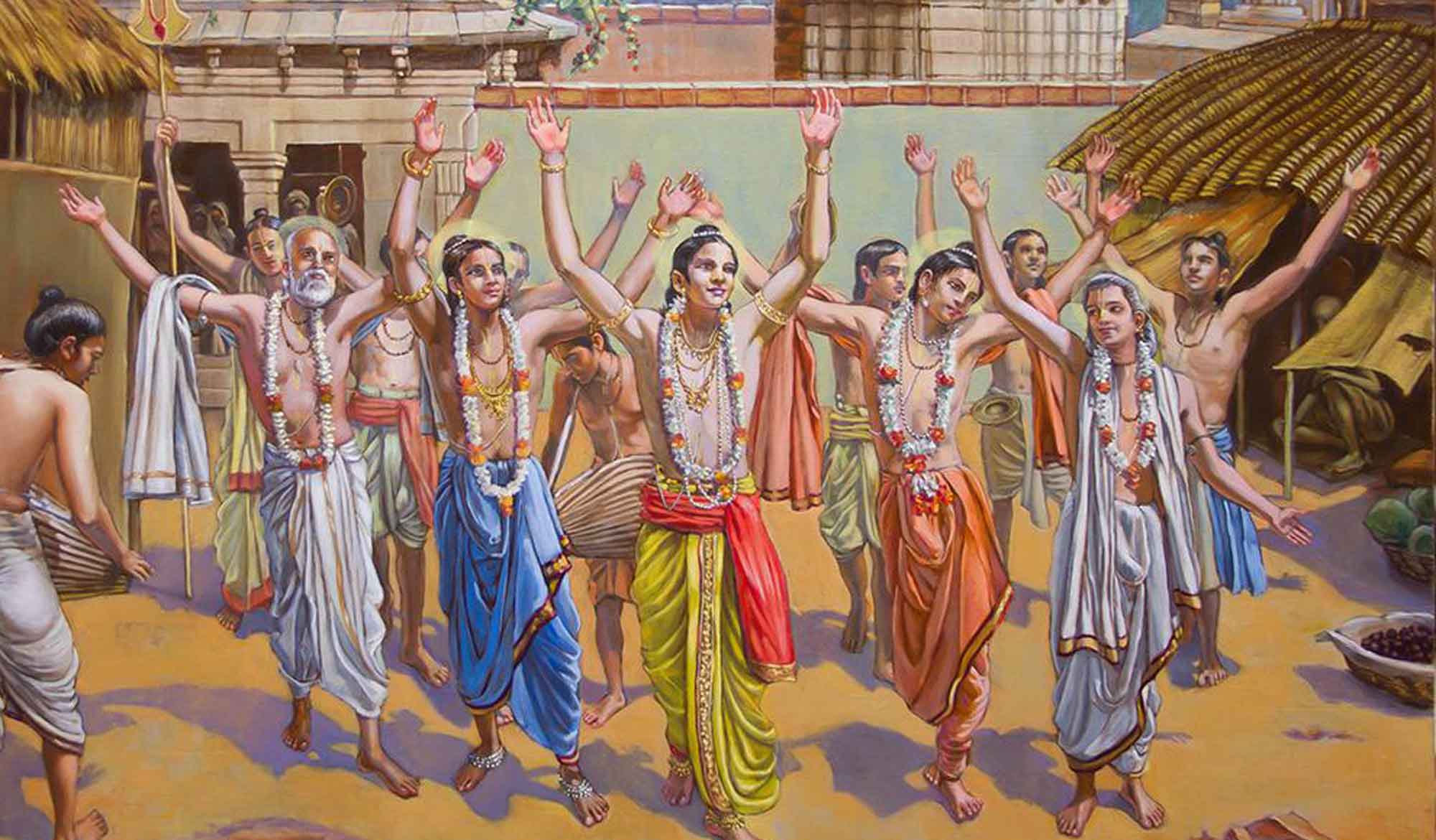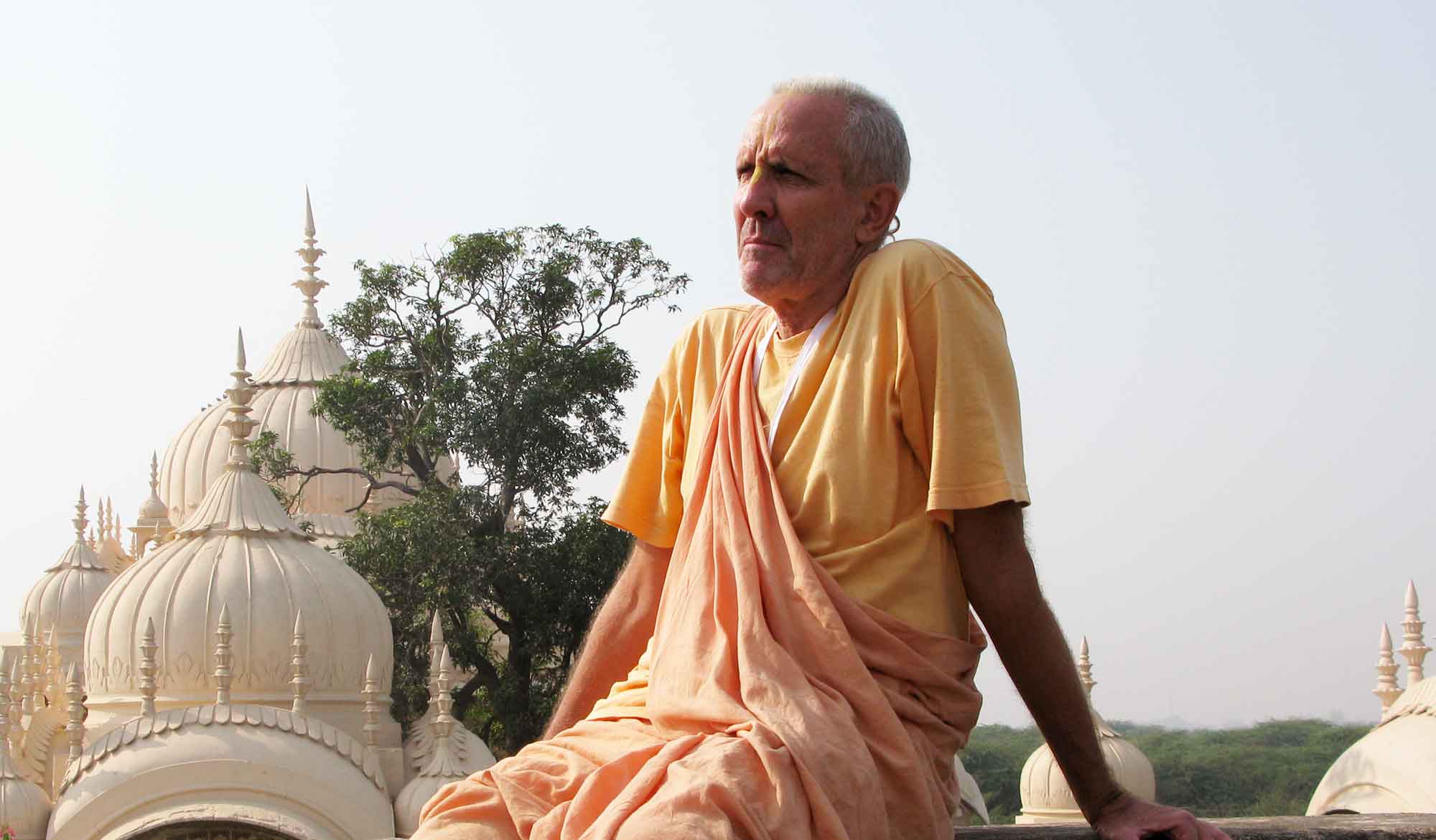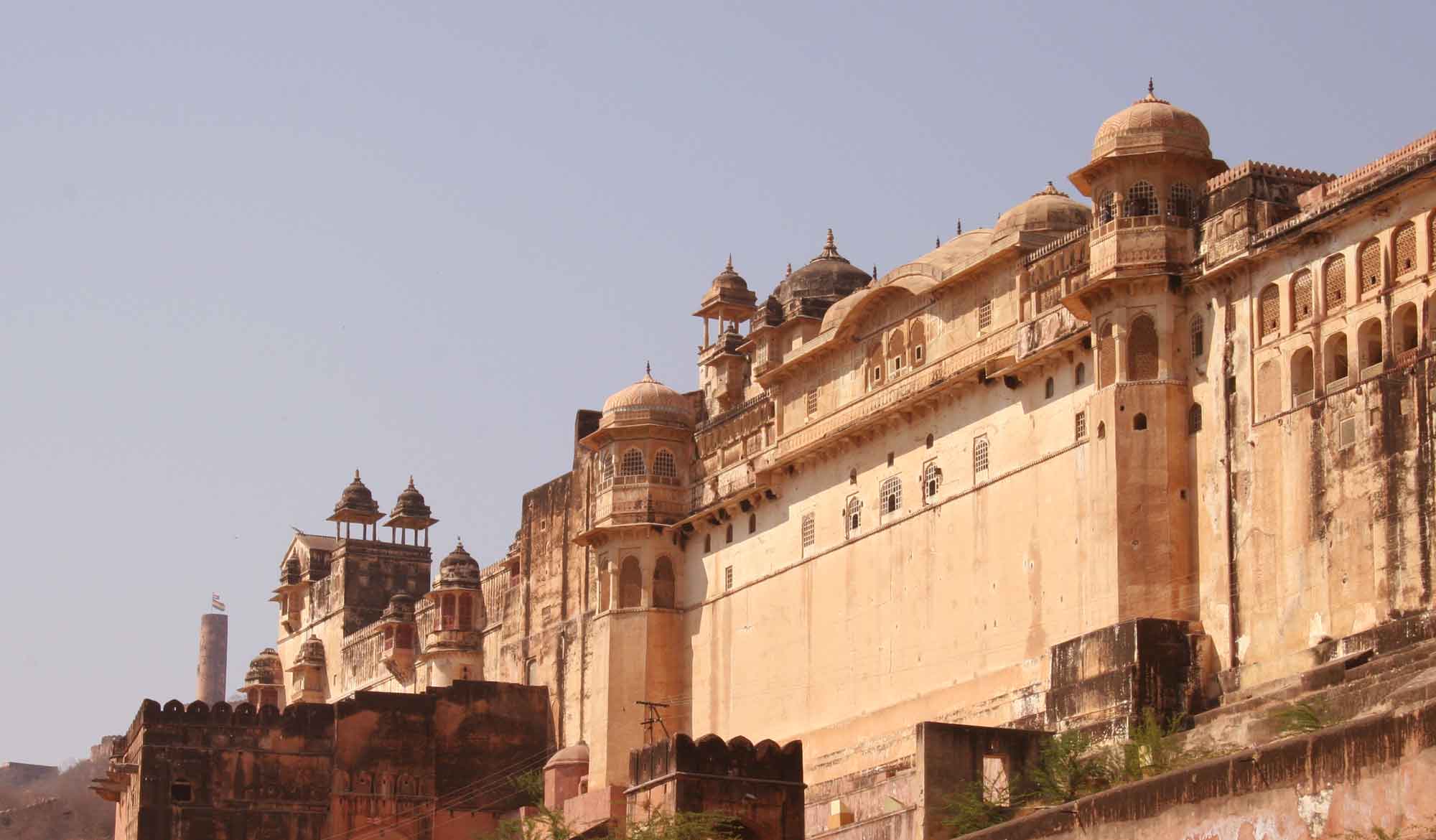by Swami B.G. Narasingha
‘The Secret of Prema – Rasika or Sahajiyā?’ was written by Swami Narasingha in 1996 for Gauḍīya Vedānta magazine. In this article, Narasingha Maharaja discusses the topic of rāgānuga-bhakti and how such a method should not be taken cheaply.
During my last visit to Śrīdhāma Māyāpura I had the great fortune of getting the darśana of Śrīla Bhakti Pramoda Purī Mahārāja. Now ninety-seven years old, he was an affectionate friend and godbrother of both Śrīla Śrīdhara Mahārāja and Śrīla Prabhupāda. Śrīla Purī Mahārāja joined the mission of Śrīla Bhaktisiddhānta Sarasvatī Ṭhākura in 1922 and has been an active preacher in Lord Caitanya’s saṅkīrtana movement ever since. We discussed many transcendental topics with Śrīla Purī Mahārāja and were very happy to see his mood of extreme reverence for Śrīla Śrīdhara Mahārāja, Śrīla Prabhupāda, the holy name, the Vaiṣṇavas, and the teachings of Mahāprabhu. Most of all we were very touched at heart by his deep humility and gentle dealings.
One evening as we sat at Śrīla Purī Mahārāja’s lotus feet hearing about what it means to be a genuine Vaiṣṇava, we were astounded when suddenly Śrīla Purī Mahārāja said, “There is a wave of sahajiyāism coming to the Western world and you must preach against this misconception.” What did he mean, “a wave of sahajiyāism is coming to the Western world?” Sahajiyāism we know means to imitate. Imitate ecstasy, imitate the behaviour of exalted Vaiṣṇavas, to take things cheaply by not following the four regulative principles and the recommended process of devotional service – these practices are sahajiyā. We have read about these things in Śrīla Prabhupāda’s books and we are no doubt aware of the shortcomings of sahajiyā tendencies – or are we?
“There is a wave of sahajiyāism coming to the Western world and you must preach against this misconception.”
If a man comes to your temple or your house dressed in a sari, wearing a nose-ring, chanting Hare Kṛṣṇa and rolling on the ground with tears of ecstasy in his eyes – well – you probably will recognize his sahajiyā tendencies and reject his association. But beyond these gross manifestations of sahajiyāism do we actually understand what a sahajiyā is and how to avoid sahajiyā tendencies? Apparently not, or Śrīla Purī Mahārāja would not have mentioned it so strongly.
Further discussions with Śrīla Purī Mahārāja revealed what he meant. Not only will the caste gosvāmīs, gaura-nāgarīs, āula, bāula, sakhī-bhekī, daraveśa, sāṅi, smārtas, ativāḍī, Cudadhari, prākṛta-sahajiyā, and many other worthless schools of imitation come to spread their nonsense in the West, but members of our own sampradāya are already introducing sahajiyāism. They are doing this in the name of rāgānuga-bhakti.
Rāgānuga-bhakti, the topic for the 90s – what is it, and how do you do it? Śrīla Purī Mahārāja stressed that if a sannyāsī or a brahmacārī thinks that he has become a rāgānuga-bhakta or a rasika and wants to hear about the confidential līlā of Kṛṣṇa and the gopīs without first having the proper qualifications, he runs the risk of becoming a woman with a mundane body in his next life!
But shouldn’t we aspire for the highest truth, rasam ānandam? It is a tricky question. We must move in the direction of truth, and we must have proper knowledge – yet at the same time we must exercise great caution. To want to know everything about kṛṣṇa-līlā is a defect and it will cause us to fall down. It is to our advantage to always seek a lower position as a servant. This is the spirit we find in Raghunātha Dāsa Gosvāmī’s Vilāpa-kusamāñjali. In this book our prayojana-tattva-ācārya is praying for service, not entertainment.
Śrīla Prabhupāda did not often discuss higher topics with his disciples, and certainly never with the general public. Yet he no doubt wanted his disciples to experience the highest esoteric reality of Gauḍīya Vaiṣṇavism. From the very beginning of his preaching campaign, he informed his disciples of the sādhya, the goal of our perfection. Later, however, he held back from discussing higher topics having understood our lack of qualification.
As early as 1967 Śrīla Prabhupāda told one of his disciples the story of Jayadeva Gosvāmī’s writing the Gīta-Govinda. Dehi pada pallavam udāram – this verse was spoken by Lord Kṛṣṇa to Śrīmatī Rādhārāṇī during Their intimate conversations. Here with great urgency and necessity, Kṛṣṇa begs for the pardon of Śrīmatī Rādhārāṇī, “Please forgive Me and place Your lotus feet on My head.” This is a most high and esoteric concept – that Kṛṣṇa Himself is declaring the exalted position of Śrīmatī Rādhārāṇī as the supermost worshippable object. This kind of thinking is not possible for beginners – the neophytes cannot conceive of such an exalted position. How is it possible? The whole world is searching for Kṛṣṇa: all the yogīs, munis, and sages. Even Brahmā, Śiva, and Viṣṇu desire the darśana of Kṛṣṇa, but Kṛṣṇa is begging for the mercy of Śrīmatī Rādhārāṇī. Just see how great She is!
When Śrīla Prabhupāda uttered this verse, he began to feel great ecstatic emotions within but he checked himself for the benefit of his disciple. While describing the love affairs between Rādhā and Kṛṣṇa, Jayadeva thought of these words, dehi pada pallavam udāram. When this happened Jayadeva was astonished, “What is this! How has such a thought entered my mind? I cannot write such a thing. How is it possible?”
Jayadeva could not conceive of such a thing. How could Kṛṣṇa, the Supreme Lord, ask for the feet of Śrīmatī Rādhārāṇī to be placed on His head? Jayadeva had great devotion and love for Kṛṣṇa as the topmost supreme entity therefore it was not appropriate for Kṛṣṇa to utter such words. Jayadeva could not bring himself to write such a verse. He began to tremble and the pen fell from his hand.
Feeling somewhat disturbed, Jayadeva decided to go to the Ganges for bath. Jayadeva informed his wife. “O good wife, I shall go to the Ganges for bath. Please prepare my meal and have it ready when I return.” Jayadeva then left the house and started for the Ganges. A short time later Jayadeva returned to the house and requested his wife to immediately serve prasādam, as he was very hungry. Jayadeva’s wife then served her husband after which Jayadeva returned to his study and began writing.
As is the custom in India, Jayadeva’s wife then sat down after her husband had eaten and began to take her prasādam. Suddenly Jayadeva appeared at the doorway of his house and began to call for his wife requesting her to serve prasādam as he was very hungry. Astonished to hear such a thing, Jayadeva’s wife informed her husband, “My most respected husband, upon returning from the Ganges you have already taken your meal and in turn I have already taken my prasādam. After that you went to your study and continued your writing. Why do you now say that you are very hungry and that you want to take prasādam?”
Hearing this Jayadeva was bewildered and unable to understand the strange behaviour of his wife. Upon entering his study, Jayadeva became even more astonished when he saw that the verse that he had hesitated to write was now written on the manuscript in his own handwriting. Kṛṣṇa himself had come to complete the verse. Kṛṣṇa had wanted Jayadeva to disclose this most inconceivable truth but he hesitated, so Kṛṣṇa did it Himself. “O Śrī Rādhā, Your holy lotus feet are very kind and generous. The burning poison of Kāmadeva, which is always pressing Me, will be finished if You place Your lotus feet on My head. Only You can save Me.”
Although Śrīla Prabhupāda described this pastime and its significance as early in his mission as 1967, he never again uttered this verse during the remaining ten years of his preaching mission until 1977. At that time, he spoke the same verse while chastising a film producer who came to get his blessing for producing a film on ‘kṛṣṇa-līlā.’ Śrīla Prabhupāda was outspoken and firm – he had no intention of ever blessing such a project. And his reasons were obvious – “Who will understand your film production?”
It is now 1995. How and when will we ever realize the significance of Jayadeva’s realisation? Shall we just chant and be happy, waiting for everything to descend? Yet “chant and be happy” is both the most basic and the highest instruction at the same time, for as Śrīla Purī Mahārāja explained, “There is no possibility of ever experiencing kṛṣṇa-prema without chanting purely.” Through hari-nāma all good fortune will come to us in due course. What about reading about rasa-tattva? Śrīla Purī Mahārāja instructed us thus, “Such books must be read with the spirit of crushing lust and greed. Without this, such reading will be counterproductive. It will serve only as the uddipana of the sthāyī–bhāva of our material life. These books,” he said, “Are not to be read for entertainment.”
To guide us in our approach to the upper world, Śrīla Bhaktisiddhānta Sarasvatī Ṭhākura has composed a nice verse that recommends that the highest aspirations in our bhajana life be kept overhead:
pūjala rāga-patha gaurava bhaṅge
mātala sādhu-jana viṣaya raṅge
“The path of divine love is worshippable to us and should be held overhead as our highest aspiration.”
To exemplify this idea of keeping the highest ideals above our heads, Śrīla Śrīdhara Mahārāja often spoke of how Śrīla Sarasvati Ṭhākura wanted to reside at Govardhana rather than at Rādhā-kuṇḍa. “I am not fit to live in Rādhā-kuṇḍa. So I shall live in a lower position, but my gurus – Gaura Kiśora Dāsa Bābājī, Bhaktivinoda Ṭhākura, and others – are fit to serve there. So I shall go and serve them there in Rādhā-kuṇḍa, and then return to a little lower position, in Govardhana. There I shall stay.”
First deserve, then desire. To discuss confidential topics about kṛṣṇa-nāma and Kṛṣṇa’s rāsa-līlā in the presence of persons who do not have the required adhikāra, or qualification, constitutes an aparādha, an offence: aśraddhadhāne vimukhe py aśṛṇvati. Offences of this kind must be avoided by one who wants to progress in Kṛṣṇa consciousness. But the higher subject matters must be discussed – they are not forbidden. For this discussion to be proper there must be a qualified speaker and a qualified listener.
Śrīla Prabhupāda’s example is pertinent. Although Śrīla Prabhupāda was internally relishing the confidential truths regarding Gauḍīya Vaiṣṇavism, he was very discrete about openly discussing such truths even among his most qualified disciples. Although outwardly not discussing the esoteric pastimes of Kṛṣṇa, internally Śrīla Prabhupāda was fully conscious of the sublime mellows of love of God. Like his spiritual master, Śrīla Bhaktisiddhānta Sarasvati Ṭhākura, outwardly Śrīla Prabhupāda worshipped the way of divine love with grandeur, awe, and reverence, but his object was that of the simple and beautiful divine love of Vṛndāvana.
A devotee who internally relishes the transcendental pastimes of Radha and Kṛṣṇa is called a rasika–bhakta. One must approach such higher devotees sooner or later to realize the inner truth of Kṛṣṇa consciousness, guhyam ākhyāti pṛcchati. Yet even if we are qualified to do so, we are still posed with a further problem. How do we tell the difference between a rasikācārya and a sahajiyā?
I think it is safe to say without objection from our readers that Śrīla Prabhupāda was a rasikācārya. As such we can get a glimpse into the symptoms of rasika-bhaktas from his example and learn further about the proper approach to the higher subject matter by observing the mood of his presentation.
There is no possibility of ever experiencing kṛṣṇa-prema without chanting purely. Although keeping everything within-not allowing his ecstasy to manifest on the external plane – the depth to which Śrīla Prabhupāda relished Kṛṣṇa consciousness would sometimes become revealed in something he did or said. For the most part, however, his internal mood was couched within his dress as a world ācārya, as jagat-guru, as a humble servant of his spiritual master and a preacher of Bhagavad-gītā As It Is. In this way Śrīla Prabhupāda was constantly engaged in kīrtana and preaching for the benefit of the fallen conditioned souls. Keeping Śrīla Prabhupāda’s example in mind, we must simultaneously remember that Śrīla Prabhupāda is not the only rasika-bhakta, and they do not all act entirely the same way.
A very different example of a rasika-bhakta is that of Puṇḍarīka Vidyānidhi. Whenever Puṇḍarīka Vidyānidhi happened to hear the topics of kṛṣṇa-līlā, he would become overwhelmed with ecstasy and exhibit sāttvika-bhāvas, such as trembling, faltering of the voice, shedding tears, fainting, rolling on the ground, and speaking like a madman. Seeing these extraordinary bodily manifestations of love of God, one who knows the science of love of God can understand something about the exalted position of Puṇḍarīka Vidyānidhi. Outwardly he appeared very ordinary, if not materialistic, but inwardly he was a devotee of the highest caliber. Of the highest caliber to say the least – he was the incarnation of King Vṛṣabhānu, the father of Śrīmatī Rādhārāṇī.
Thus to understand the internal workings of a rasika devotee is not an easy matter – vaiṣṇavera kriyā-mudrā vijñeha na bujhaya. But we must try if we are to make progress. What shall be our guiding light? Ultimately, we must move according to our faith. Yet enlightened faith is required, not blind faith. Scripture is there to guide us, śāstra-cakṣus. A discriminating devotee, madhyama-adhikārī, must make such determinations. Such determinations, however, must be based on a thorough understanding of the revealed scripture, lest one prematurely condemn the rasika-bhakta or prematurely praise the sahajiyā.
As for the examples of rasika-bhaktas mentioned, we should concern ourselves more with the example of Śrīla Prabhupāda than that of Puṇḍarīka Vidyānidhi. Why? Because cheaters often imitate the behaviour of devotees like Puṇḍarīka Vidyānidhi but they almost never imitate the preachers like Śrīla Prabhupāda. Yet at the same time Puṇḍarīka’s example is also pertinent if we study it closely. Puṇḍarīka Vidyānidhi never claimed to have love of God. When his advanced symptoms overcame him, after coming to external consciousness he would attribute them to epilepsy, thus attempting to conceal his prema. In this, Śrīla Prabhupāda and Puṇḍarīka Vidyānidhi are one, although different in outer appearance.
Prema is not something to brandish about and show off as the sahajiyās pretend to do. Its very nature is that it is confidential. Thus the śruti tells us, “One who says he knows Brahman does not know Brahman.” More explicitly, Śrīmatī Rādhārāṇī through the pen of Śrīla Viśvanātha Cakravartī Ṭhākura has told the world this secret of prema – “Thus o friend, as long as the light of prema does not shine on one’s face, it will shine in the lovers’ hearts. But if it is brought outside, it will vanish or be dimmed. O auspicious girl, remove the darkness of your doubts by opening the box of my heart and looking at the secret jewels of love therein. Hold them in your heart and never show them to anyone!” (Prema Samputa 68 & 111)
Although the rasika–bhaktas try to hide their prema, we should recognize them by such and ardently try to take shelter of their lotus feet. We should make the goal of our life the pleasure of Kṛṣṇa’s dearest servants. That will automatically qualify us for the higher plane. If we become intruders of kṛṣṇa-līlā, if we try to jump ahead without proper qualification, then we will certainly be cast down.
It is the duty of all the disciples, and especially the sannyāsīs, of Śrīla Prabhupāda and Śrīla Śrīdhara Mahārāja to preach against the advances of sahajiyāism in the Vaiṣṇava community here in the Western world. It is also the sannyāsī’s duty in particular to cultivate rāgānuga-bhakti. Śrīla Purī Mahārāja remarked that to be a real sannyāsī one must not only preach, but also tread the rāga–mārga. This is so because the sannyāsa–mantra is a rāga-mārga mantra. Thus sannyāsīs in our line should be acquainted with the meaning of the sannyāsa–mantra and aspire for the day when genuine eagerness for rāga–bhakti awakens within. If the sannyāsīs do so while simultaneously preaching, it will be a great service to Caitanya Mahāprabhu’s movement. The standards for preaching and bhajana have already been established for this movement by Śrīla Bhaktisiddhānta Sarasvatī Ṭhākura, and as Śrīla Purī Mahārāja has recently requested, we should take inspiration from Sarasvatī Ṭhākura and do the needful.
More Articles by Swami B.G. Narasingha
The Importance of Mahāprabhu
“The Importance of Mahāprabhu” is a previously unpublished article written by Śrīla Narasiṅgha Mahārāja in 1998 in response to a question concerning the divinity of Mahāprabhu in regards to the verse ‘ārādhyo bhagavān vrajeśa tanayas.’ This article ends abruptly, so it is possible that Śrīla Narasiṅgha Mahārāja never completed it.
Gītā-Govinda Revisited
“Gītā-Govinda Revisited” is a previously unpublished article written in 2010 by Śrīla B.G. Narasiṅgha Mahārāja. In this essay, Narasiṅgha Mahārāja answers a devotee’s questions concerning Jayadeva Gosvāmī’s work who asks if the warnings given by Śrīla Śrīdhara Mahārāja and other ācāryas concerning higher literature are still relevant today.
Jaipur
“Jaipur” was written by Śrīla B.G. Narasiṅgha Mahārāja for ‘Clarion Call’ magazine, Vol.1, issue 2 in 1988. Mahārāja gives a history of Jaipur and in particular, talks about the famous Deity of Govindaji, who resides within the heart of the Pink City.

